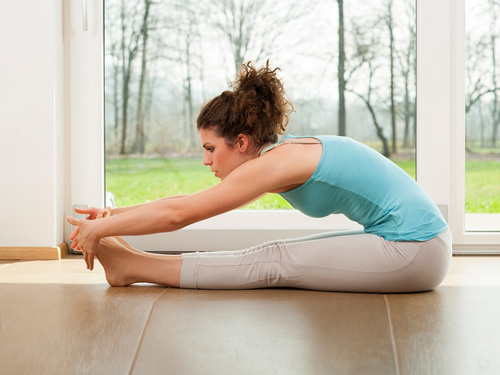Researchers say 12 weeks of passive stretching can improve blood flow and improve your heart health.
They say the stretching can reduce problems in a person’s vascular system and decrease the risk of events such as heart attack and stroke. Experts say aerobic exercise, weight loss, and lower blood pressure are also ways to improve heart health. Just 12 weeks of passive stretching can help the vascular system and improve blood flow, according to a new study. Researchers from the University of Milan in Italy found that those who engaged in passive stretching had increased blood flow in their arteries and a decrease in artery stiffness.“Blood pressure was decreased, central and peripheral arterial stiffness was reduced, and vascular function was increased after 12 weeks of passive stretching training,” the authors of the study wrote.They note that this kind of stretching can improve a person’s heart health.
Passive stretching is a stretch where an external force provides the stretch. This can be through a stretching partner, stretching accessories, or gravity.
Active stretching doesn’t involve an external force.
The researchers enlisted 39 healthy men and women and split them into two groups.One group was instructed to do leg stretches five times a week for 12 weeks, and the other group didn’t do any stretching. Those who stretched saw an improvement to their vascular system. The researchers say this could have implications for diseases that involve changes to blood flow, such as heart attack and stroke.
“In this Italian study, there was a significant improvement in flow-mediated dilation, which can be thought of as the ability of an artery to dilate in response to an increase in blood flow,” said Jonathan Myers, PhD, a health research scientist and director of the Exercise Research Laboratory at the Palo Alto Veterans Affairs Health Care System in California.
“A novel finding from this study was the fairly remarkable changes in vascular function simply by passive stretching,” Myers told Healthline. “This suggests that practitioners should routinely recommend stretching in addition to regular aerobic exercise for patients with vascular disease. The positive changes in arterial function by stretching were not as large as those generally considered to occur with aerobic exercise, but further studies are needed to determine the extent to which passive stretching can complement aerobic exercise.”
If the findings of the study were replicated in people with vascular disease, researchers could determine whether passive stretching may be a suitable treatment for improving vascular health. “Exercise is one of the most effective ways to ensure healthy arteries, but a lot of the types of exercise that are most studied are cardiovascular focused such as running, walking, biking, swimming. This study is exciting because it shows similar benefits with non-cardio training,” said Dr. Nicole M. Weinberg, a cardiologist at Providence Saint Joseph Health Center in Santa Monica, California.










